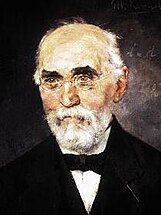
Back التنازع على الأولوية بالنظرية النسبية Arabic Controverse sur la paternité de la relativité French Disputa sulla paternità della teoria della relatività Italian 상대성 이론 우선권 논쟁 Korean Controvérsia sobre a paternidade da teoria da relatividade Portuguese
Albert Einstein presented the theories of special relativity and general relativity in publications that either contained no formal references to previous literature, or referred only to a small number of his predecessors for fundamental results on which he based his theories, most notably to the work of Henri Poincaré and Hendrik Lorentz for special relativity, and to the work of David Hilbert, Carl F. Gauss, Bernhard Riemann, and Ernst Mach for general relativity. Subsequently, claims have been put forward about both theories, asserting that they were formulated, either wholly or in part, by others before Einstein. At issue is the extent to which Einstein and various other individuals should be credited for the formulation of these theories, based on priority considerations.
Various scholars have questioned aspects of the work of Einstein, Poincaré, and Lorentz leading up to the theories’ publication in 1905. Questions raised by these scholars include asking to what degree Einstein was familiar with Poincaré's work, whether Einstein was familiar with Lorentz's 1904 paper or a review of it, and how closely Einstein followed other physicists at the time. It is known that Einstein was familiar with Poincaré's 1902 paper [Poi02], but it is not known to what extent he was familiar with other work of Poincaré in 1905. However, it is known that he knew [Poi00] in 1906, because he quoted it in [Ein06]. Lorentz's 1904 paper [Lor04] contained the transformations bearing his name that appeared in the Annalen der Physik. Some authors claim that Einstein worked in relative isolation and with restricted access to the physics literature in 1905. Others, however, disagree; a personal friend of Einstein, Maurice Solovine, acknowledged that he and Einstein pored over Poincaré's 1902 book, keeping them "breathless for weeks on end" [Rot06]. The question of whether Einstein's wife Mileva Marić contributed to Einstein's work has also been raised, but most scholars on the topic say that there is no substantive evidence that she made significant contributions.[1]


